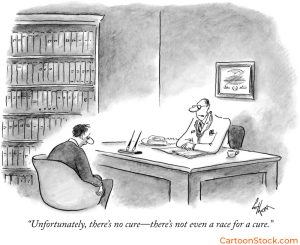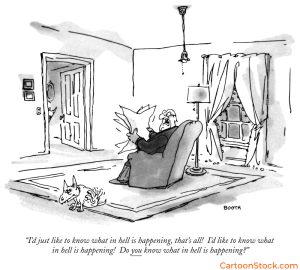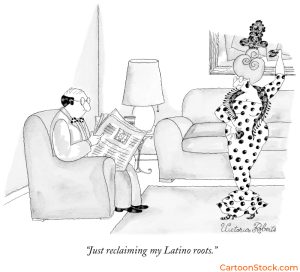
Cartoon critics Phil Witte and Rex Hesner look behind the gags to debate what makes a cartoon tick. This week our intrepid critics take a look at Desert Island Cliché.
Ever wondered about the personality behind the cartoonist’s pen? CartoonStock’s latest sponsored book, Funny Stuff: How Great Cartoonists Make Great Cartoons, tackles that question in the chapter, “Psyche of the Cartoonist.” Let’s begin with a fan favorite—Roz Chast.
As one of the world’s most beloved cartoonists, Chast has written and spoken extensively about her childhood. Her upbringing as the only child of older, Depression-era parents shaped her view of the world as a scary place. They told her she had two jobs: do well in school and don’t die. Death is the ultimate subject to worry about and the premise of some of her greatest cartoons.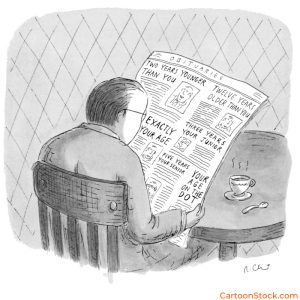
One of the New Yorker’s most prolific cartoonists for decades, Frank Cotham serves up a steady stream of bad news cartoons. He readily admits, “I’m a ‘glass is completely empty’ sort of person.” Even the gray and ominous backgrounds in his cartoons convey the message: there’s no hope, but there is humor.
George Booth’s rural Missouri upbringing gives a clue to the style of humor: These cartoons are not slickly sophisticated. They are little scenes of folks trying to make sense of the world. Booth peeks into windows and eavesdrops on the telling remarks of a house’s inhabitants. The thin, scratchy line and casual ink wash give his work an appropriately folksy, almost disheveled appearance.
At the opposite end of the spectrum from the angry, depressed, and neurotic cartoonists stands Amy Hwang. She depicts a world of relative tranquility, of kitties and coffee cakes, offering a gentle humor that tickles, not slaps. Her cartoons are more like pages from her diary, a glimpse into her daily world.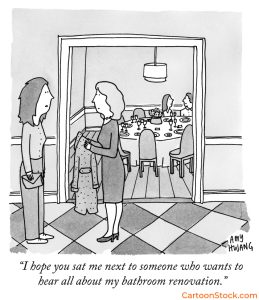
The cartoons of Victoria Roberts spring like flowers from the pages of the New Yorker. They brim with a child-like delight in the everyday. Roberts presents a joyful, uncomplicated world, free of cynicism and conflict. The wife may have been inspired by Roberts’ mother, whom she described as “a bit of a diva, a real character.”
Edward Steed’s cartoon world teems with psychopaths doing horrible things. His humor goes beyond dark; it is savage. This unassuming Englishman has no peer among his contemporaries in outrageous cartoon humor. As Steed has said, “Everything’s kind of a glimpse of my subconscious. At times it’s quite revealing, and I do hesitate sometimes.”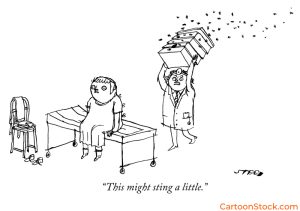
If you’d like to see more great cartoons and commentary, check out the rest of Funny Stuff. It’s packed with over 100 cartoons and never-before-seen illustrations. Funny Stuff pulls back the curtain on this beloved art form with entertaining analysis—always with a light touch.
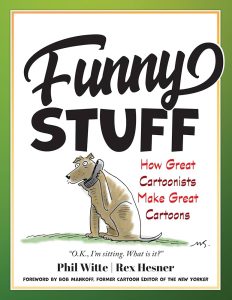
Available on Amazon, Barnes & Noble, or wherever books are sold.
“a must for people who love the single-panel cartoon form and a great primer for aspiring cartoonists”
– Bob Mankoff, former cartoon editor of The New Yorker
“delightful, engaging, and illuminating”
– Roz Chast, New Yorker cartoonist and best-selling author
“a must-have for cartoon fans”
– Dan Piraro, creator of “Bizarro”


